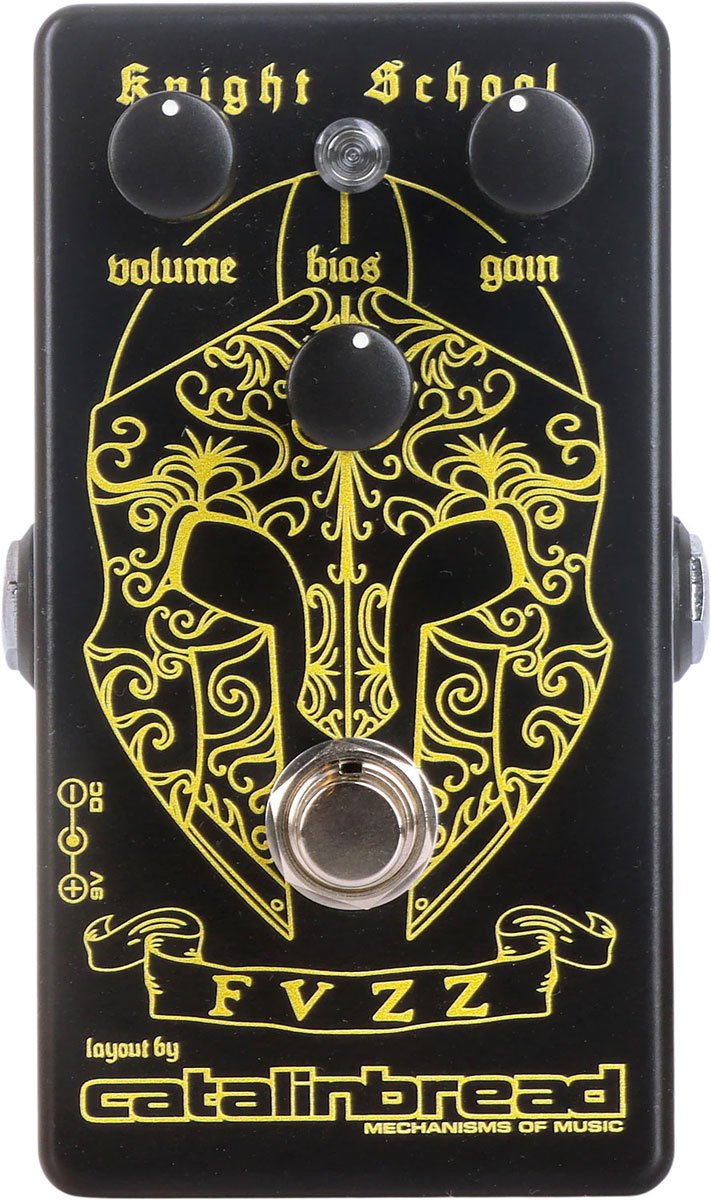KNIGHT SCHOOL FUZZ - KIT PARA MONTAR
Si deseas conseguir uno, los ofrecemos en forma de kit, para que puedas montarlo tú mismo. El ensamblaje es muy sencillo y solo requiere un soldador, estaño y una buena ventilación; nosotros nos encargamos del resto. Lo que comenzó como una herramienta educativa para un curso local de fabricación de pedales impartido por un técnico local especializado en amplificadores, se convirtió en un pedal que ¡debemos compartir contigo! Nos llegaron dos solicitudes simples: primero, un pedal fuzz potente que cubriera todas las bases, desde un sonido lleno y gutural hasta un sonido entrecortado y áspero. Hecho. Segundo, debía poder colocarse casi en cualquier parte de la cadena, a diferencia del Fuzz Face, por ejemplo, que es conocido por ser muy exigente con su ubicación. Tercero, debía ser sencillo de construir, lo suficientemente fácil para los soldadores más novatos. Creemos haberlo logrado con el Knight School Fuzz, que está basado en uno de los circuitos fuzz más subestimados que existen: el Jordan Boss Tone. Originalmente, este dispositivo se conectaba directamente a tu guitarra en una época en la que los pedales aún no estaban realmente “de moda”, por lo que integrarlo en una configuración moderna no es un procedimiento tan simple como con la mayoría de los otros dispositivos vintage. A diferencia de muchos circuitos de la época, el Boss Tone no está basado en ningún otro circuito. La mayoría de los otros fuzz venerables se copiaban unos a otros de alguna manera, pero Jordan Electronics, cuyos ingenieros también construían contadores Geiger, asumió el desafío de crear un circuito original, y lo lograron con el Boss Tone, aunque la carcasa no era muy amigable. A pesar de sus dificultades de integración, puedes escuchar el Boss Tone en varios álbumes clásicos de ZZ Top, The Black Keys, Spirit, New Riders of the Purple Sage y muchos más. Nuestro Knight School Fuzz se inspira en esta fórmula, con algunos cambios de valores, transistores diferentes para un sonido más moderno y un control de Bias que disuelve completamente el sonido en una locura nudosa cuando lo giras al máximo.
Características:
- Bias: todos los pedales de guitarra funcionan con un voltaje X, y en los pedales analógicos, especialmente los de transistores como este, modificar el voltaje de alimentación recomendado puede dar resultados interesantes. Este control reduce el voltaje de 9 V a un poco menos de 5 V. En términos sonoros, esto se traduce en un sonido “más delgado” y “más suave” que muchos han comparado con los sonidos de los videojuegos. Al llevar este control al máximo, el circuito produce una textura suave y chisporroteante que evoca sonidos sutiles de octava inferior. En esta configuración, realmente debes involucrarte mientras tocas para sacarle el máximo provecho, pero serás ampliamente recompensado. Nota: para todos los experimentadores, el control Bias desestabiliza todo el circuito y te ofrece una especie de “caos controlado” mientras tocas. Sin embargo, si tu botón Bias está al máximo cuando conectas el cable de alimentación, el pedal oscilará y producirá texturas de sintetizador y drone hasta que lo estabilices girando el botón de Ganancia. Esto no volverá a ocurrir hasta que desconectes y vuelvas a conectar la alimentación con el Bias al máximo.
- Ganancia: muchos controles de ganancia están ligados a un semiconductor específico, y algunos están cableados como controles de volumen que separan una parte del circuito del resto. Este está cableado como este último, pero separa la guitarra del resto del circuito. ¡De hecho, es idéntico al botón de volumen de tu guitarra! Si mantienes este botón al máximo, puedes controlar el nivel de ganancia con tu guitarra. Alimentación El Knight School Fuzz solo acepta una alimentación de corriente continua con polaridad negativa en el centro, capaz de suministrar 9 voltios y al menos 0,5 mA de corriente (más es aceptable). Información sobre el kit DIY La placa de circuito impreso tiene indicaciones sobre la ubicación de cada componente. La imagen a continuación te ayudará a identificar los diferentes componentes. También encontrarás un video más abajo que te mostrará cómo proceder.
 es
es 